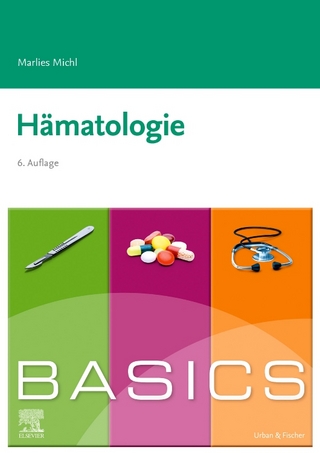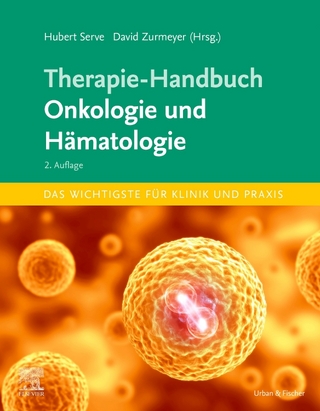
Problem Solving in Apheresis Medicine
Springer International Publishing (Verlag)
978-3-031-74080-0 (ISBN)
- Noch nicht erschienen - erscheint am 03.03.2025
- Versandkostenfrei innerhalb Deutschlands
- Auch auf Rechnung
- Verfügbarkeit in der Filiale vor Ort prüfen
- Artikel merken
This book is mainly about solving clinical problems in the application of medical apheresis.
Unlike many other books on apheresis, it is kept short and concise. Many pictures, tables and workflow diagrams help in understanding the solutions presented.
The aim is to guide professionals in transfusion medicine, pathology, haematology - oncology, neurology, rheumatology, nephrology and transplant medicine through the process of treatment and decision-making in the clinic and in their own practice. The book provides practical knowledge that can be immediately applied in patient care to optimize the apheresis treatment.
Ilknur Kozanoglu is Professor of Physiology and director of the Cell Processing and Stem Cell Collecting and Therapeutic Apheresis Units at the Adult Bone Marrow Transplantation Center at Baskent University, Ankara, Turkey. She is also the director of the Hematology Research Laboratory, which she established while working for the Hematology Department at Baskent University. She started her education at the Department of Physiology, Cukurova University, Adana, Turkey, in 1998, after graduating in Medicine from Cumhuriyet University, Sivas, Turkey, in 1995. Professor Kozanoglu later worked as a research scientist at Olle Ringden's centre at Karolinska University in Sweden in 2011 on the production of mesenchymal stem cells from placental membranes and their clinical use. In the following years, she produced these cells using a bioreactor and applied them to repair the damaged microenvironment of the bone marrow. She was also a lecturer at the Department of Physiology at BaskentUniversity.
Professor Kozanoglu was head of the Scientific Subcommittee on Laboratory Standards of the Turkish Association of Hematology. She is also a member of the EBMT-JACIE International Quality Group; she works as an international JACIE representative and for stem cell product safety. In this position, she has played a role in generalizing quality standards nationwide as a national JACIE project executive. Professor Kozanoglu has been involved in the development of EU directives for cell and tissue procedures as a trainer in collaboration with the Ministry of Health and the EU. Her interests include sickle cell disease, which is one of the most common genetic diseases worldwide.
She has published more than 100 research papers, the most important of which were studies on therapeutic apheresis and stem cells relevant to transplant physiology, GVHD and the bone marrow microenvironment. Professor Kozanoglu has played an important role in improving the success of stemcell transplantation in vulnerable patient populations.
Part 1. Principles of apheresis.- Chapter 1. History of apheresis.- Chapter 2. Apheresis techniques.- Chapter 3. Apheresis math and calculations.- Chapter 4. Apheresis team and job descriptions.- Part 2. ASFA Guide 2019.- Chapter 5. How to read ASFA guide.- Chapter 6. Indication categories.- Chapter 7. Category IV diseases for ASFA.- Part 3. Top problems and solutions in apheresis.- Chapter 8. Vascular access problems during apheresis.- Chapter 9. Problems during apheresis in children.- Chapter 10. Problems during the usage and dosage of anticoagulants.- Chapter 11. Complications and avoiding of complications during apheresis.- Chapter 12. Complications during (leukocytapheresis and thrombocytapheresis and) adsorptive cytapheresis treatment.- Chapter 13. Basic Principles and Problems during Donor lymphocyte collection procedures.- Part 4. Complications during plasma exchange and plasmapheresis therapy.- Chapter 14. Complications during apheresis in patients with hematologic diseases.- Chapter 15. Complications during apheresis in patients with intoxications.- Chapter 16. Complications during apheresis in patients with sepsis.- Part 5. Problems during Red Cell Exchange procedure.- Chapter 17: Managing acute complication of sickle cell disease.- Chapter 18. Basic Principles of DFPP.- Chapter 19. Comparison of DFPP and plasma exchange.- Part 7. Problems during Extracorporeal photopheresis: ECP.- Chapter 20. Extracorporeal photopheresis in patients with acute graft versus host disease.- Chapter 21. Extracorporeal photopheresis in patients with chronic graft versus host disease,- Part 8. What should to talk about for apheresis at the future.- Chapter 22. Quality control principles in apheresis.- Chapter 23. Current developments and research.- Chapter 24. Aging and apheresis: State of the art.- Chapter 25. Apheresis and COVID 19.
| Erscheint lt. Verlag | 3.3.2025 |
|---|---|
| Zusatzinfo | II, 265 p. 14 illus., 8 illus. in color. |
| Verlagsort | Cham |
| Sprache | englisch |
| Maße | 178 x 254 mm |
| Themenwelt | Medizinische Fachgebiete ► Innere Medizin ► Hämatologie |
| Medizin / Pharmazie ► Medizinische Fachgebiete ► Onkologie | |
| Studium ► 2. Studienabschnitt (Klinik) ► Pathologie | |
| Schlagworte | Apheresis • Apheresis procedures • Concise manual of apheresis • Management of complications • Technical details of apheresis • Therapeutic apheresis |
| ISBN-10 | 3-031-74080-7 / 3031740807 |
| ISBN-13 | 978-3-031-74080-0 / 9783031740800 |
| Zustand | Neuware |
| Informationen gemäß Produktsicherheitsverordnung (GPSR) | |
| Haben Sie eine Frage zum Produkt? |
aus dem Bereich


